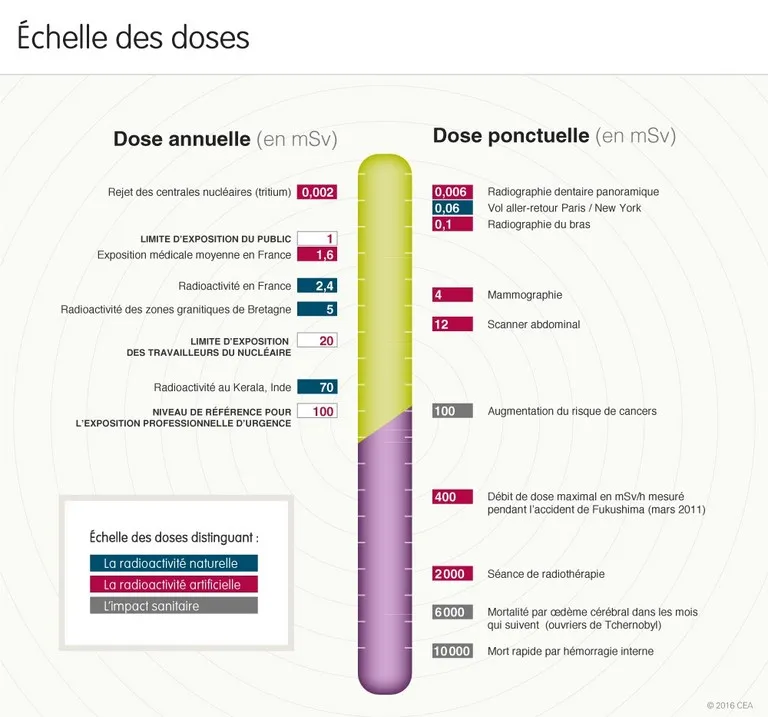What is radioactivity ?
Radioactivity : definition
Minerals containing uranium or thorium are radioactive, with an intensity proportional to the quantity of radioactive metals present (uraninite, autunite, thorianite, torbernite...).
Many weakly radioactive minerals (fergusonite, allanite, zircon...), although emitting little radiation, nevertheless show a strong disorganization of their network caused by X-rays. Highly radioactive minerals do not undergo this metamict disorganization, the strongly ionic atomic bonds of these minerals ensuring rapid restoration of damage caused by irradiation.
Measuring the radioactivity of minerals
The Sievert (Sv) is the unit used to assess the impact of ionizing radiation on humans. It is the unit of the International System which takes into account the biological effects on living tissues produced by absorbed radiation. In this way, the equivalent dose is obtained through the absorbed dose multiplied by two appropriate dimensionless weighting factors.
The activity and impact of ionizing radiation can be measured using a Geiger counter which will display a value in µSv/h (microsieverts per hour). 1mSv = 1000µSv.
Dangers of radioactivity
Relative dangers of mineral radioactivity
The most radioactive sample we found in our stock is a cuproskodowskite from Katanga. Our Geiger counter placed very close to the sample outside its box displays a radioactivity of 225 µSv/h, this radioactivity is only 2.5 µSv/h at 50 cm from its closed plastic box and the ambient radioactivity of the room (which contains other radioactive minerals such as autunites or torbernites) and 0.30 µSv/h.
By arbitrarily setting an annual exposure threshold at 10 mSv (2 times lower than that of a nuclear worker), you would have to keep the sample with you for around 2 full days to reach this threshold, or stay 166 days 24 hours a day to 50 cm from the box. In absolute terms, there is therefore no danger in having radioactive minerals in a display case or in a box.
So, be careful...
In the event of a health risk, the Nuclear Safety Authority (ASN) can contact the IRSN to secure the premises. The IRSN can mobilize, via the Radioprotection Intervention and Assistance Service (SIAR), a team of engineers and technicians throughout France in a few hours. To do this, the SIAR has equipment for sampling, measuring and protecting people. Furthermore, the National Agency for Radioactive Waste Management (Andra) can be contacted if it proves necessary to evacuate all or part of the minerals. Finally, the IRSN intervenes when a radioactive mineral is detected by a load control gantry like those found at the entrance to recycling centers. This happened in 2013, at the French entrance to the Channel Tunnel, for a German postal package containing a radioactive mineral. However, this type of alert is rarely due to a collection mineral, which has "low" radioactivity...


